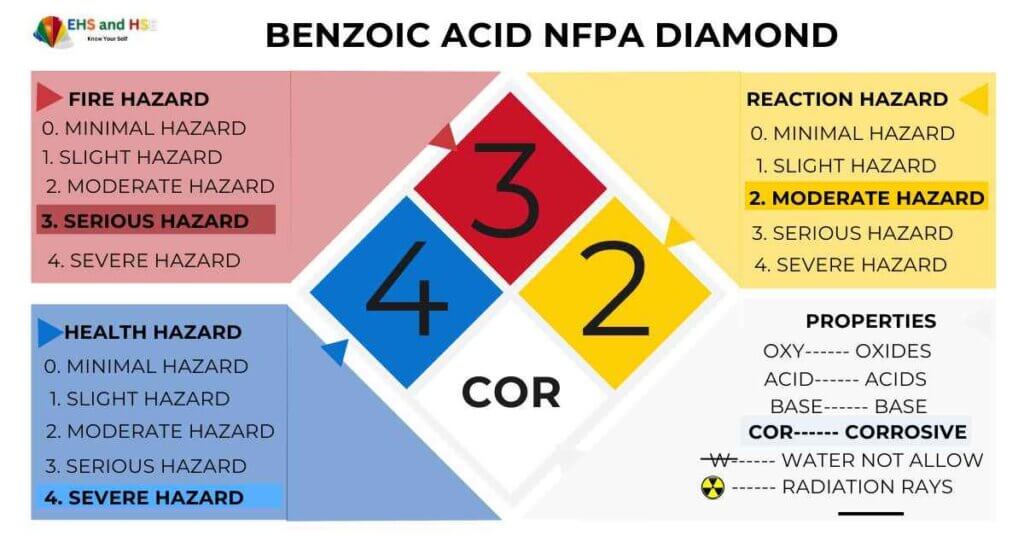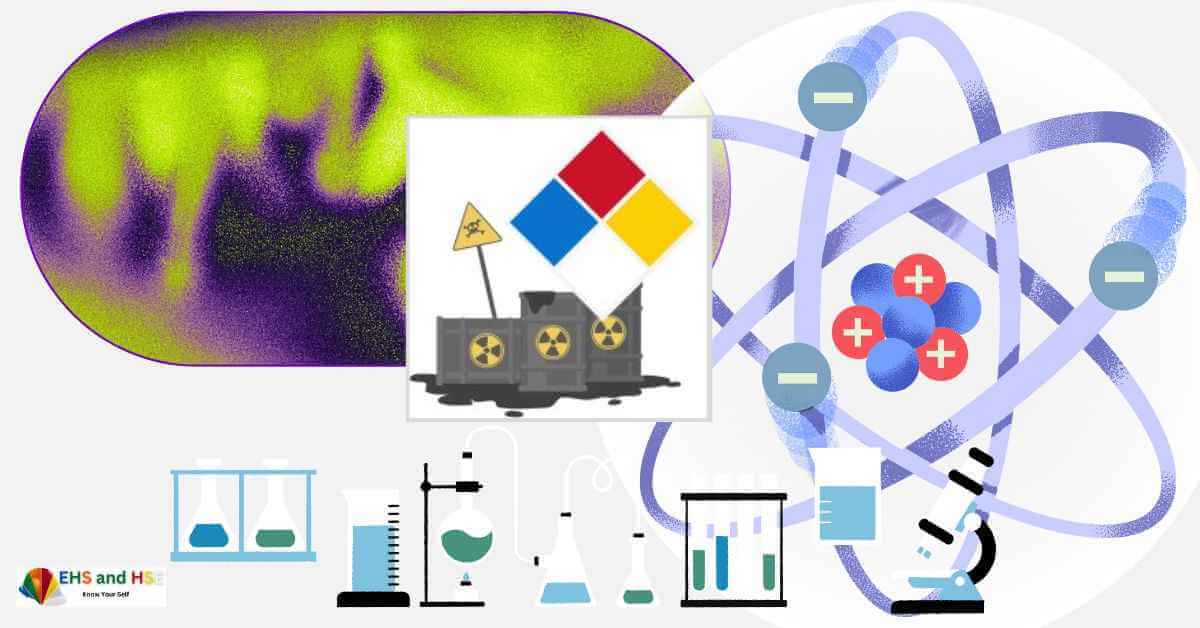Acids and Toxic chemicals NFPA diamonds are very important. Because the use of acids and toxic chemicals without safety is very dangerous for humans. The NFPA of acids tells us about appropriate chemical handling safety precautions and PPE (Personal Protective Equipment).
Acids NFPA Diamond
Hydrochloric acid (HCl)
The reaction of hydrogen gas with chlorine gas makes hydrochloric acid. Industrially, they produce Hydrochloric acid (HCL). It is widely used in the production of various chemicals, including PVC (polyvinyl chloride), and in the food industry for pH control. The textile industry also uses it to control the pH of water during the RO process.
- Health Hazard is a Serious Hazard and the Rating is “3”.
- Fire Hazard is Minimal Hazard and the Rating is “0”.
- Reaction Hazard is a Slight Hazard and the Rating is “1”.
- *ACID is the Special Hazard or Property of this product, which is “ACID”.

Sulfuric acid (H2SO4)
The contact process produces sulfuric acid (H2SO4) by oxidizing sulfur dioxide to sulfur trioxide, followed by its reaction with water. The production of fertilizers, detergents, and various industrial processes like petroleum refining use a part of this acid.
- Health Hazard is a Serious Hazard and the Rating is “3”.
- Fire Hazard is Minimal Hazard and the Rating is “0”.
- Reaction Hazard is a Slight Hazard and the Rating is “1”.
- There is a Special Hazard or Property of this product, which is “ACID”.

Nitric acid (HNO3)
Through the Ostwald process, ammonia is oxidized to produce nitric acid (HNO3). Used in the production of fertilizers, explosives, and various metal etching and cleaning processes.
- Health Hazard is a Serious Hazard and the Rating is “3”.
- Fire Hazard is Minimal Hazard and the Rating is “0”.
- Reaction Hazard is a Ninimal Hazard and the Rating is “0”.
- There is a Special Hazard or Property of this product, which is “OXY”.
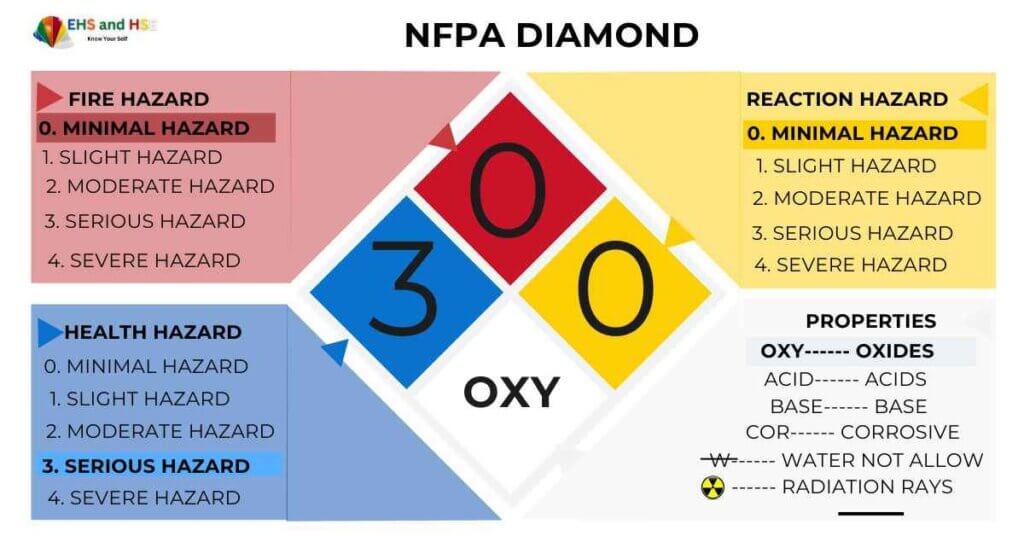
Acetic acid (CH3COOH)
The vinegar naturally contains acetic acid (CH3COOH) and is also produced synthetically through various processes. Commonly used in the food industry for vinegar production, as a solvent, and in the production of plastics and textiles. So the acetic acid NFPA diamond is very important in acids NFPA diamond because acetic acid is more dangerous for health as compared to other acids.
- Health Hazard is a Serious Hazard and the Rating is “3”.
- Fire Hazard is a Moderate Hazard and the Rating is “2”.
- Reaction Hazard is a Ninimal Hazard and the Rating is “0”.
- There is a Specific Hazard or Property of this product, which is “COR”.
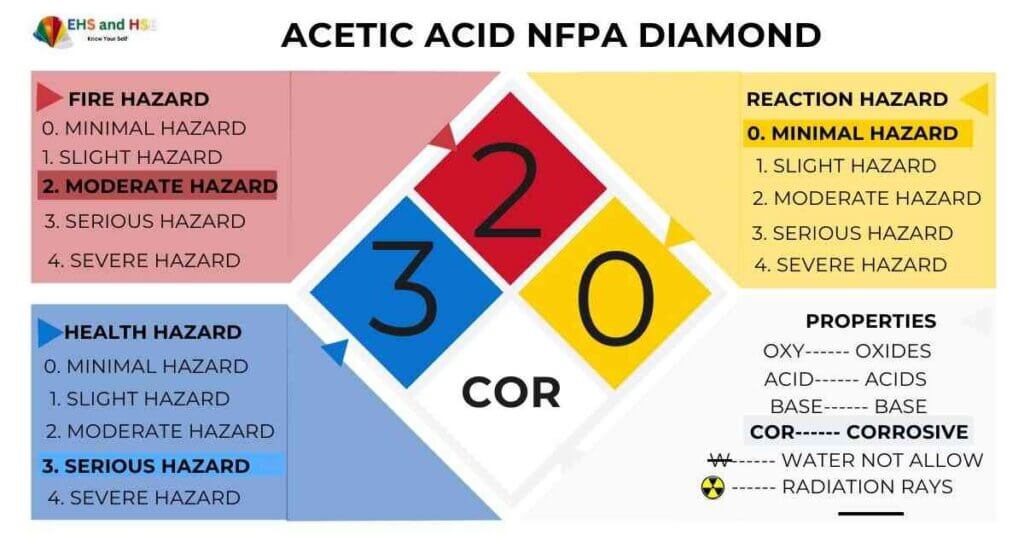
Citric acid (C6H8O7)
Citric acid (C6H8O7) Naturally occurring in citrus fruits like lemons and oranges. widely used as a food additive for flavoring and as a preservative. The pharmaceutical and cosmetic industries also use it.
- Health Hazard is a Serious Hazard and the Rating is “3”.
- Fire Hazard is Moderate Hazard and the Rating is “2”.
- Reaction Hazard is a Ninimal Hazard and the Rating is “0”.
- There is a Specific Hazard or Property of this product, which is “COR”.
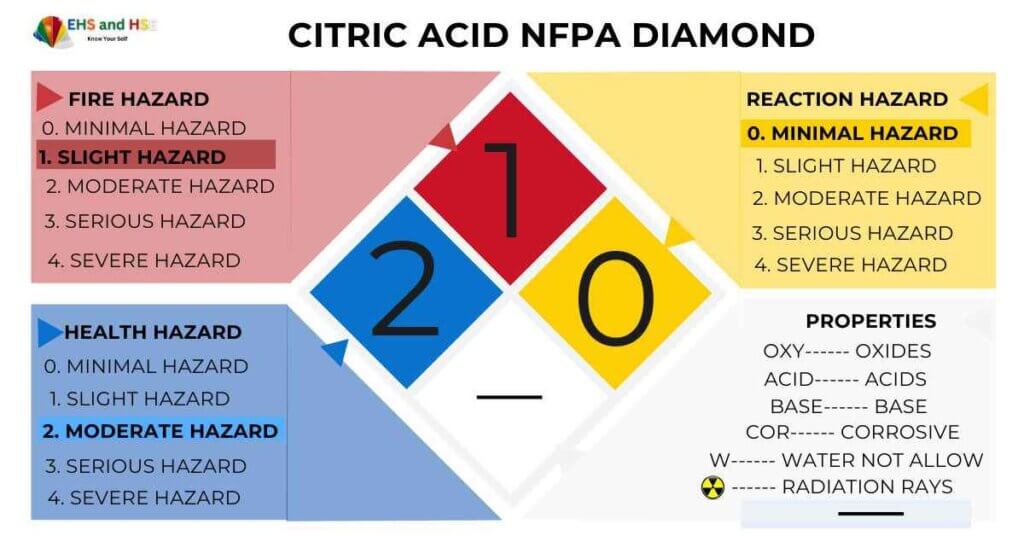
Lactic acid (C3H6O3)
Bacteria ferment sugars to produce lactic acid. And Uses in the food and beverage industry as an acidulant and preservative. Also used in the production of biodegradable plastics.
- Health Hazard is a Serious Hazard and the Rating is “3”.
- Fire Hazard is Minimal Hazard and the Rating is “0”.
- Reaction Hazard is a Ninimal Hazard and the Rating is “0”.
- There is a Specific Hazard or Property of this product, which is “Not spacific”.

Phosphoric acid (H3PO4)
Phosphate rocks are used to produce phosphoric acid in a process. It is commonly used for the application of soft drinks, fertilizers, and rust conversion.
- Health Hazard is a Serious Hazard and the Rating is “3”.
- Fire Hazard is Minimal Hazard and the Rating is “0”.
- Reaction Hazard is a Ninimal Hazard and the Rating is “0”.
- There is a Specific Hazard or Property of this product, which is “Not spacific”.

Formic acid (HCOOH)
Some ants naturally produce formic acid (HCOOH), and it can also be synthetically produced. In leather processing, textile dyeing, and livestock feed, it is used as a preservative.
- Health Hazard is a Serious Hazard and the Rating is “3”.
- Fire Hazard is Moderate Hazard and the Rating is “2”.
- Reaction Hazard is a Ninimal Hazard and the Rating is “0”.
- There is a Specific Hazard or Property of this product, which is “Not spacific”.
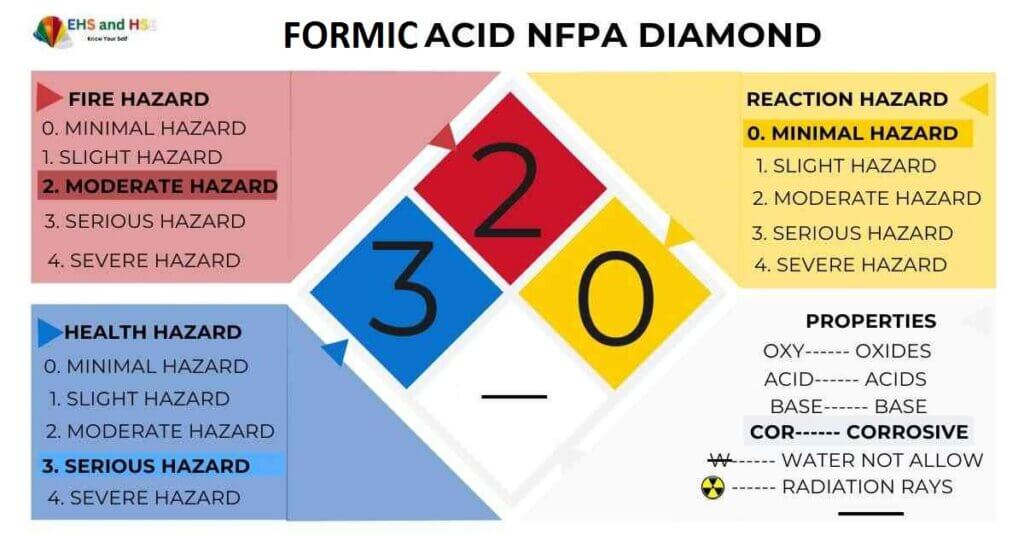
Hydrofluoric acid (HF)
Sulfuric acid reacts with fluorite to produce hydrofluoric acid (HF). Used in the production of aluminum, in the oil refining industry, and for etching glass. Hydrofluoric acid
- Health Hazard is a Serious Hazard and the Rating is “3”.
- Fire Hazard is Moderate Hazard and the Rating is “2”.
- Reaction Hazard is a Ninimal Hazard and the Rating is “0”.
- There is a Specific Hazard or Property of this product, which is “Not spacific”.
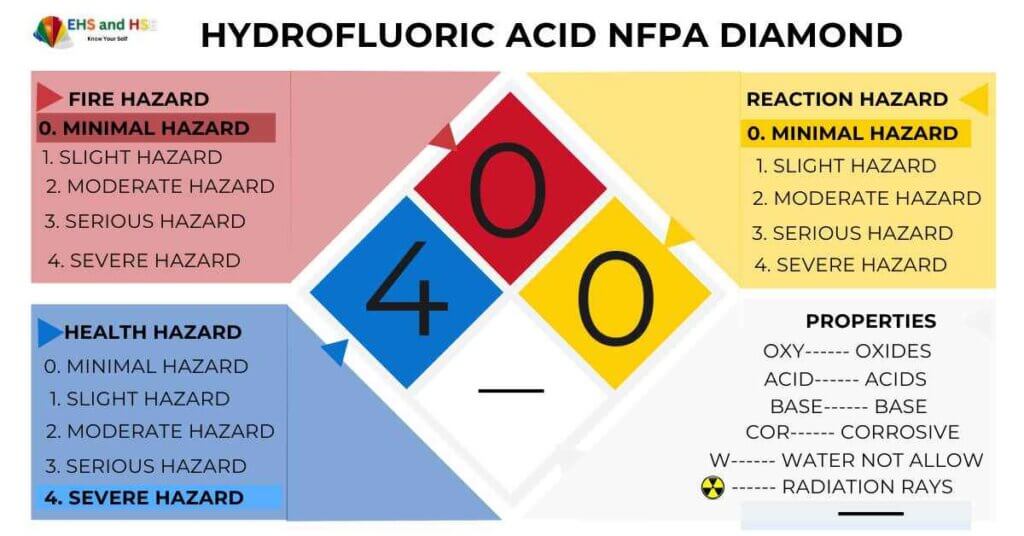
Carbonic acid (H2CO3)
When carbon dioxide dissolves in water, it forms carbonic acid. It functions as a weak acid and plays a role in the carbonation of beverages.
Terephthalic Acid
- Health Hazard is a Slight Hazard and the Rating is “1”.
- Fire Hazard is a Serious Hazard and the Rating is “3”.
- Reaction Hazard is a Serious Hazard and the Rating is “3”.
- There is a Specific Hazard or Property of this product, which is “Not spacific”.
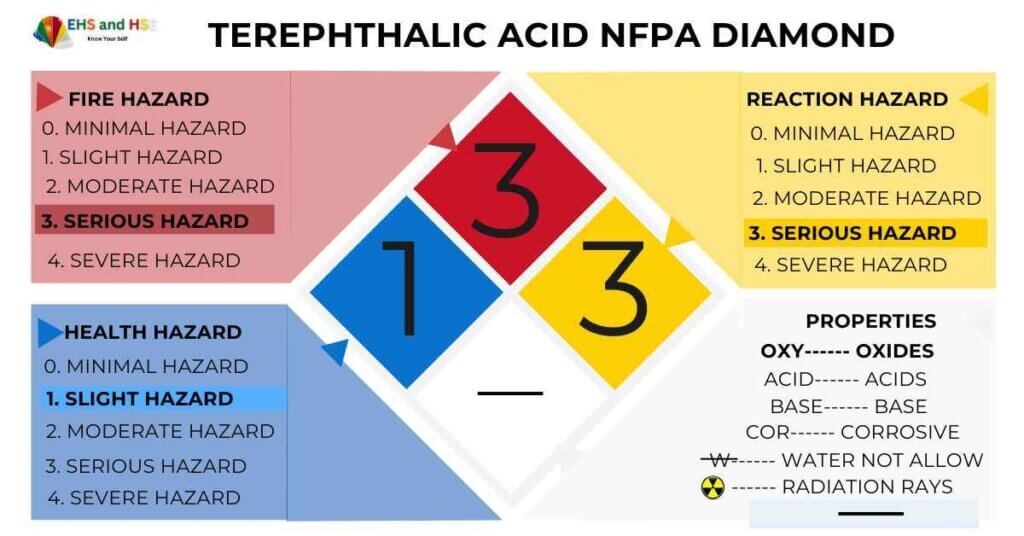
Hydrobromic acid (HBr)
Dissolving bromine gas in water typically produces hydrobromic acid. Alternatively, various chemical processes, such as the production of certain organobromine compounds, can generate it as a byproduct. Used as a reagent in various chemical reactions, particularly in the synthesis of pharmaceuticals and organic compounds. It also uses catalytic processes, influencing reaction pathways. Used in the refining of oil and gas, specifically in the treatment of crude oil. Manufacturing of semiconductors and electronics is complete with the help of this acid.
Benzoic acid
Benzoic acid is very dangrious acid because this acid high risk rating in each hazard section.
- Health Hazard is a Severe Hazard and the Rating is “4”.
- Fire Hazard is Serious Hazard and the Rating is “3”.
- Reaction Hazard is a Moderate Hazard and the Rating is “2”.
- There is a Specific Hazard or Property of this product, which is “COR”.
